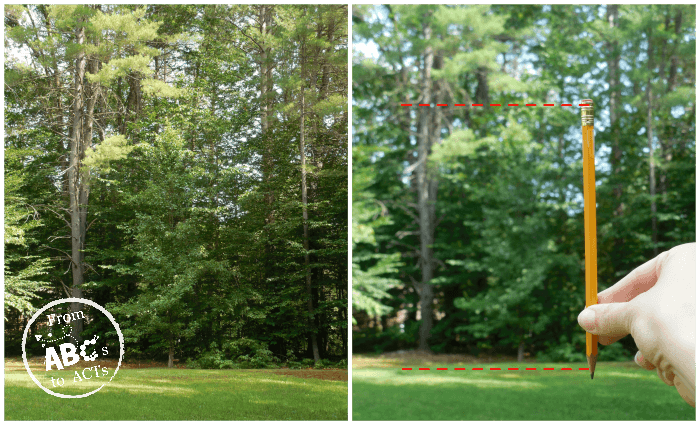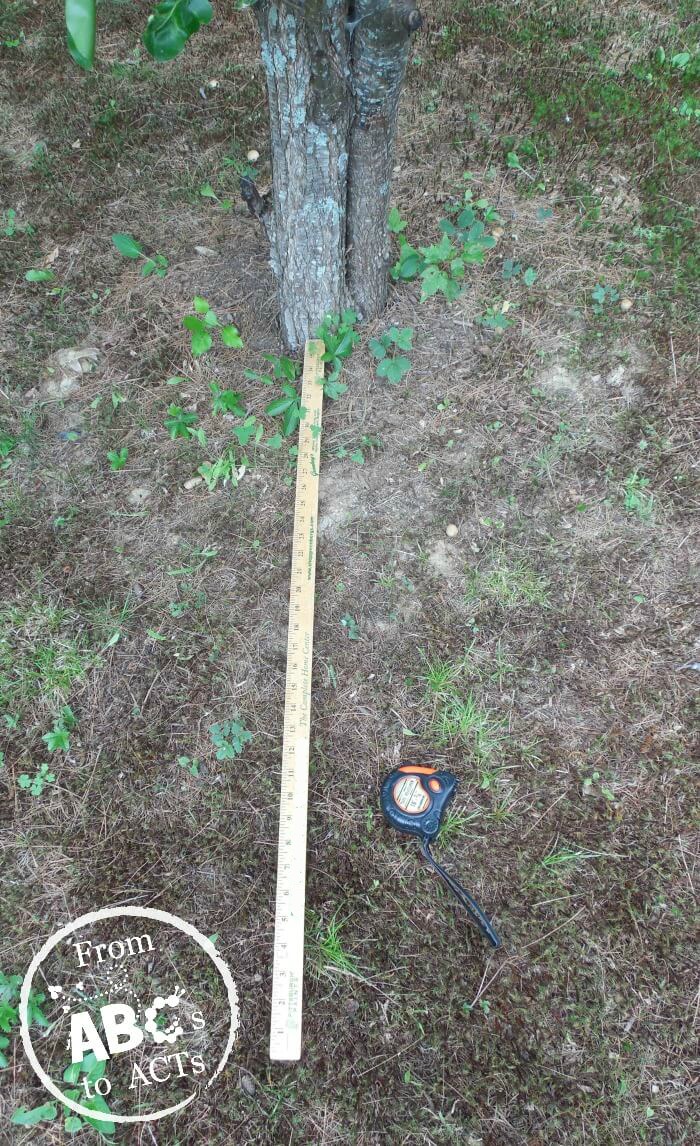This post may contain affiliate links. For more information, please see my full disclosure policy.
Have your children or students ever wondered how high a particular tree is, but felt they had no way to measure it? Never fear, you don’t need a crane, hot air balloon, or drone to measure that tree top! Outdoor STEM to the rescue! Here is an easy method of estimating tree height that kids can do in pairs.
All you need is an outdoor space, a few trees, at least two people and a measuring tool. Once they see how simple it is to complete this STEM activity, your kids just might be inspired to make other measurements or calculations out in nature.

Materials
To do this activity you will need:
- “Measuring Tree Height” Printable
- 2 people
- A pencil
- Measuring tool (meter stick, measuring tape, etc.)
- Outdoor space with trees

Outdoor STEM: Measure a Tree
First, have students pair up and choose a tree to measure. There will be two roles to fill. One kid will be the pencil holder, who estimates the tree height and the other will stand near the tree, and later pace out the measurement.
Once they have chosen a tree, one partner should wait patiently at the base of the tree, while the other (the pencil holder) begins to walk further away from it.
Periodically, the pencil holder should turn and face the tree. They should hold up the pencil vertically in front of them to see how the size of the pencil compares to the tree. Once the pencil tip is level with the tree top and the tip of the eraser is level with the base of the trunk, the pencil holder should stop moving. Depending on the height of the tree, this may be far or near.

Next, they should turn the pencil horizontally, with the eraser seeming to touch the tree’s trunk. The pencil holder should now direct their other partner to walk away from the tree trunk until it looks like the tip of the pencil is touching their partner. See the “Measuring Tree Height” printable for a diagram. This is where the partner should stop and stand still.
Now it is time to measure. The pencil holder will join the partner where they have stopped. The two kids will now measure from where the partner stands to the base of the tree trunk. This measurement will equal the approximate height of the tree! Now they can record what they have found on the “Measuring Tree Height” printable.

Have the kids swap tasks and measure a second tree now that they know how.
Outdoor STEM Extensions
Now that the students know this method of estimation, challenge them to apply it to some other structure outdoors.
If your location is one with different types of flowers or leaves, you may want to explain the Golden Ratio and go on a math and nature scavenger hunt.
Bring some engineering into your nature study by exploring how seeds move and then designing your own seeds in this engineering challenge.
For some tree chemistry, you can investigate pigments in the fall or any time of year with this leaf chromatography experiment.
